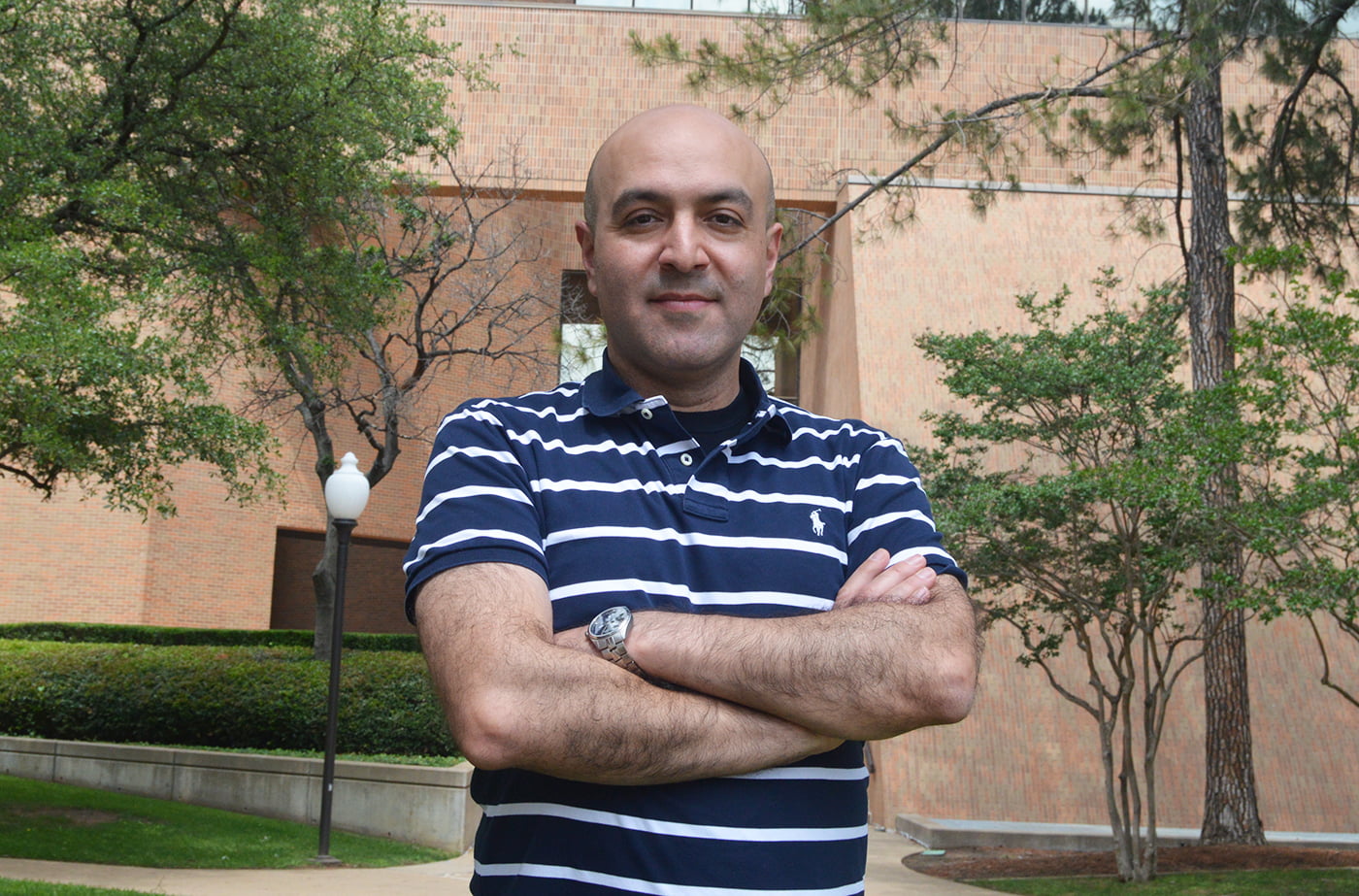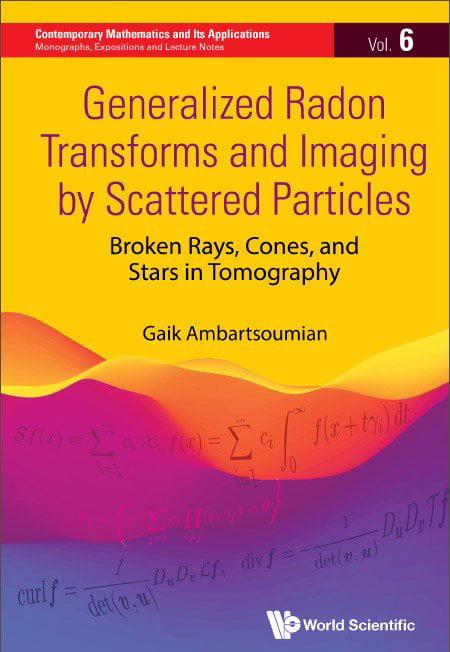Life Sciences Building, Room 206
501 S. Nedderman Drive
Box 19047
Arlington, TX 76019
New book focuses on recent developments in mathematics of medical imaging

A mathematician at The University of Texas at Arlington has published a new book about the development of mathematics which plays a crucial role in imaging technology utilizing scattered particles.
Applications of this technology include medical imaging devices used to diagnose disease and target medical treatment, Compton cameras used to detect radiation sources in astronomy and homeland security, imaging techniques for industrial non-destructive testing, and other fields.
Gaik Ambartsoumian, associate professor of mathematics, is the author of the book, Generalized Radon Transforms and Imaging by Scattered Particles: Broken Rays, Cones, and Stars in Tomography. It was published in April by World Scientific as part of a series on contemporary mathematics and its applications.

Tomography is a non-destructive way of imaging the interior of a three-dimensional object by recovering the images of its two-dimensional slices.
“Tomographic devices utilize various physical signals, such as X-rays, laser beams, and ultrasound waves, to probe the object through multiple measurements of the input and output strengths of those signals outside the body,” Ambartsoumian said. “A typical example is the CT scanner, which emits a beam of photons that travels through the human body and is captured by a receiver on the other side.
“These machines generate a bunch of numbers that one would like to interpret and preferably (out of those numbers) get an image of the interior of the human body. That’s where the mathematicians come in. They write equations that interpret what the input and output signals are showing, and then solve those equations to recover a function that represents the sought-after image.”
One vital aspect of the transport of photons through the body is the attenuation process, which is the reduction in intensity of the beam as it is transmitted through the body. Different particles are scattered or absorbed as they go through the body, for example, by bones and tissues. Some of the particles travel along straight lines through the entire body, while others get scattered and change direction based on what they pass through. By measuring the input and output signals, mathematicians can find the attenuation coefficient, which is a measure of how much the beam intensity is weakened by the material it passes through.
“The attenuation coefficient is a function of the spatial variable, that is, its value depends on the location in the body,” Ambartsoumian said. “Mathematicians are looking for that function, as its grayscale image is essentially the CT scan of the body.”
In conventional X-ray and optical tomography, the emitter and receiver are aligned to face each other so that the receiver catches all the particles which travel along straight lines. But it is well known that most photons in X-ray and optical tomography are scattered, meaning they change their direction inside the body and do not arrive at the receiver parallel to the source.
“In the last few decades multiple techniques and ideas have been developed on how to use the data carried by scattered photons — the stuff that in conventional imaging modalities is treated as ‘junk’,” Ambartsoumian said. “Can we salvage it and get some meaningful information out of it? To do this, we need new math and that’s what the book is about — it discusses the mathematics developed in the past few decades that is devoted to utilizing scattered particles for image reconstruction.”
One area of mathematics that is especially useful for dealing with these problems is integral geometry, he said. In simple terms it can be explained as a discipline dealing with the recovery of functions from the knowledge of their integrals along various trajectories or surfaces. Mathematically, such problems require the study of various integral transforms and their inversions. A classical example is the so-called Radon transform, which relates a function of two variables and its integrals along straight lines in the plane. The inverse of the Radon transform plays a crucial role in reconstruction of images from medical CT scans.
In the mathematical models of image reconstruction utilizing scattered particles, the integral transforms map functions to their integrals along more complicated trajectories, such as broken rays and stars in two dimensions, and cones in three dimensions. This leads to the study of generalized Radon transforms integrating along non-smooth trajectories and surfaces.
The book covers in detail multiple imaging modalities using scattered particles, their mathematical models, and the related generalized Radon transforms. The target audience of the book includes mathematicians working in the fields of inverse problems and integral geometry, as well as biomedical engineers, computer scientists, and other specialists interested in imaging applications.
Ambartsoumian’s research interests include inverse problems, computerized tomography, integral geometry, and mathematical problems of imaging. He earned a Ph.D. in Mathematics from Texas A&M University and joined the UTA Department of Mathematics in 2006.
--
The UTA College of Science, a Texas Tier One and Carnegie R1 research institution, is preparing the next generation of leaders in science through innovative education and hands-on research and offers programs in Biology, Chemistry & Biochemistry, Data Science, Earth & Environmental Sciences, Health Professions, Mathematics, Physics and Psychology. To support educational and research efforts visit the giving page, or if you're a prospective student interested in beginning your #MaverickScience journey visit our future students page.